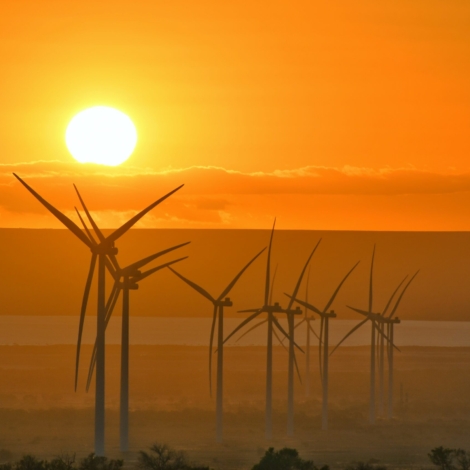First, the good news. The world took a record-breaking step toward producing half of global energy with renewables, moving the needle from 40 percent in 2022 to 43 percent in 2023. The International Renewable Energy Agency (IRENA) reports a global addition of 473 GW of renewable capacity in 2023, an increase of nearly 14 percent over 2022.
Solar, and to some extent wind, led nearly all of it. Solar was the clear winner adding 346 GW. Solar is now the dominant renewable energy source, eking past hydropower to sit at 37 percent of global renewable capacity, compared to hydro’s 33 percent. The numbers mean that 2023 showed the highest-ever annual growth in renewable capacity.
Now the hard news: It still wasn’t enough. To meet the goal set at COP28, the world needs to triple installed renewable energy generation capacity by 2030 to 11 TW. In 2023, the world sat at 3,870 GW, meaning we need to add a little more than 1 TW annually to hit the mark. In other words, each year we need to increase renewable energy capacity more than twice as much as we did in 2023.
And some good news again. Ten countries produce nearly all of their energy from renewable sources according to rankings by Mark Jacobson, Stanford University Professor of Civil and Environmental Engineering. Using data from the International Energy Agency (IEA) and IRENA, Dr. Jacobson ranked countries by their solar, wind and hydro energy generation capacity. In the top 10:
- Albania (100 percent)
- Bhutan (100 percent)
- Nepal (100 percent)
- Paraguay (100 percent)
- Iceland (99.9 percent)
- Ethiopia (99.9 percent)
- Congo (99.8 percent)
- Costa Rica (98.5 percent)
- Norway (98.4 percent)
- Namibia (97.3 percent).
Rounding out the countries with 90 percent or more renewable energy:
- Zambia (92 percent)
- Uganda (91.9 percent)
- Tajikistan (90 percent)
African countries rank in the lists above, and the continent has drawn attention as a target for improvement in the global energy transition. Historically, Africa has been left behind in energy transition investment, IRENA says, but that trend may be poised for a turn-around.
The Accelerated Partnership for Renewables in Africa launched at COP28 in 2023, building on the Nairobi Declaration on Climate Change. The partnership “puts the African nations at the steering wheel,” IRENA says.
“The Nairobi Declaration on Climate Change and Call for Action underscore Africa’s inherent capacity to lead a climate-compatible industrial revolution. The Declaration set an ambitious target to increase the continent’s renewable capacity from 56 GW in 2022 to 300 GW by 2030,” according to a statement by IRENA.

